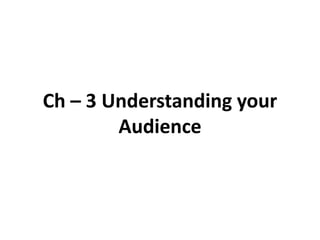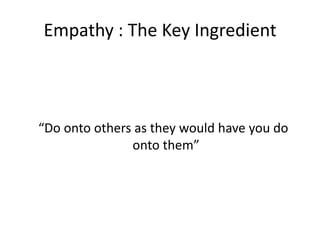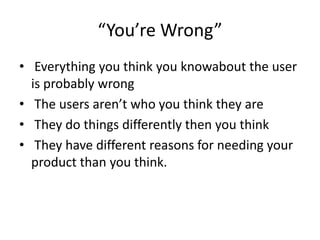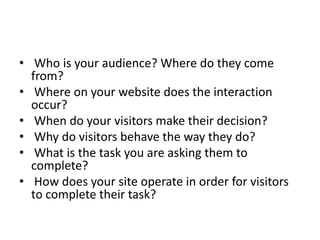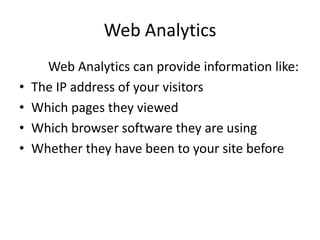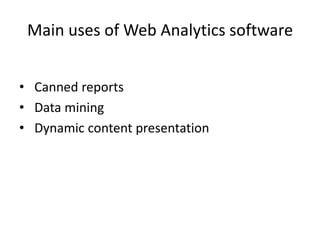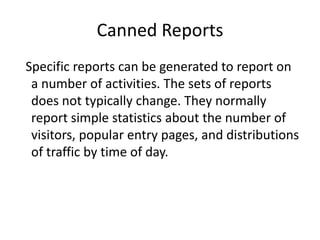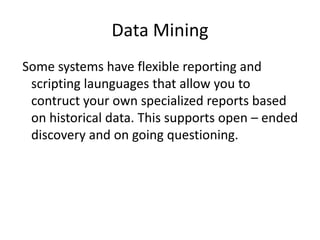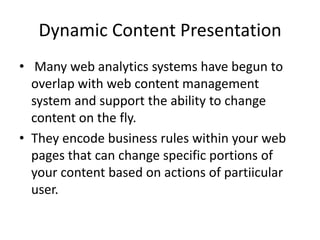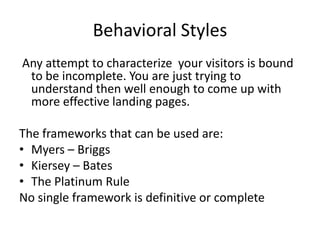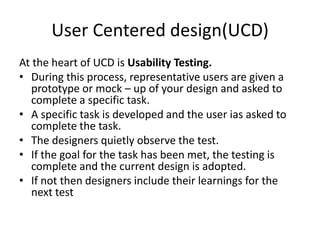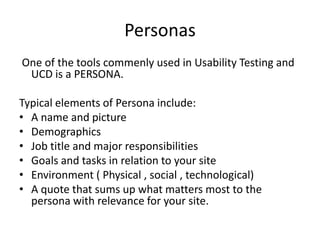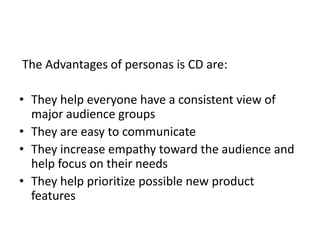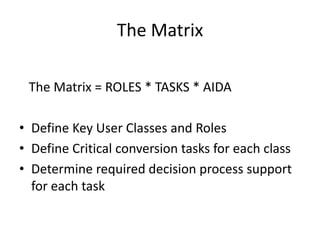Ch 3
- 1. Ch ©C 3 Understanding your Audience
- 2. Empathy : The Key Ingredient Ī░Do onto others as they would have you do onto themĪ▒
- 3. Ī░YouĪ»re WrongĪ▒ ? Everything you think you knowabout the user is probably wrong ? The users arenĪ»t who you think they are ? They do things differently then you think ? They have different reasons for needing your product than you think.
- 4. ? Who is your audience? Where do they come from? ? Where on your website does the interaction occur? ? When do your visitors make their decision? ? Why do visitors behave the way they do? ? What is the task you are asking them to complete? ? How does your site operate in order for visitors to complete their task?
- 5. Web Analytics ? ? ? ? Web Analytics can provide information like: The IP address of your visitors Which pages they viewed Which browser software they are using Whether they have been to your site before
- 6. Main uses of Web Analytics software ? Canned reports ? Data mining ? Dynamic content presentation
- 7. Canned Reports Specific reports can be generated to report on a number of activities. The sets of reports does not typically change. They normally report simple statistics about the number of visitors, popular entry pages, and distributions of traffic by time of day.
- 8. Data Mining Some systems have flexible reporting and scripting launguages that allow you to contruct your own specialized reports based on historical data. This supports open ©C ended discovery and on going questioning.
- 9. Dynamic Content Presentation ? Many web analytics systems have begun to overlap with web content management system and support the ability to change content on the fly. ? They encode business rules within your web pages that can change specific portions of your content based on actions of partiicular user.
- 10. Behavioral Styles Any attempt to characterize your visitors is bound to be incomplete. You are just trying to understand then well enough to come up with more effective landing pages. The frameworks that can be used are: ? Myers ©C Briggs ? Kiersey ©C Bates ? The Platinum Rule No single framework is definitive or complete
- 11. User Centered design(UCD) At the heart of UCD is Usability Testing. ? During this process, representative users are given a prototype or mock ©C up of your design and asked to complete a specific task. ? A specific task is developed and the user ias asked to complete the task. ? The designers quietly observe the test. ? If the goal for the task has been met, the testing is complete and the current design is adopted. ? If not then designers include their learnings for the next test
- 12. Personas One of the tools commenly used in Usability Testing and UCD is a PERSONA. Typical elements of Persona include: ? A name and picture ? Demographics ? Job title and major responsibilities ? Goals and tasks in relation to your site ? Environment ( Physical , social , technological) ? A quote that sums up what matters most to the persona with relevance for your site.
- 13. The Advantages of personas is CD are: ? They help everyone have a consistent view of major audience groups ? They are easy to communicate ? They increase empathy toward the audience and help focus on their needs ? They help prioritize possible new product features
- 14. The Matrix The Matrix = ROLES * TASKS * AIDA ? Define Key User Classes and Roles ? Define Critical conversion tasks for each class ? Determine required decision process support for each task
- 15. Basically The Matrix ensures that you have thought through in detail how to uide the right people , through the right activities, in the correct order

